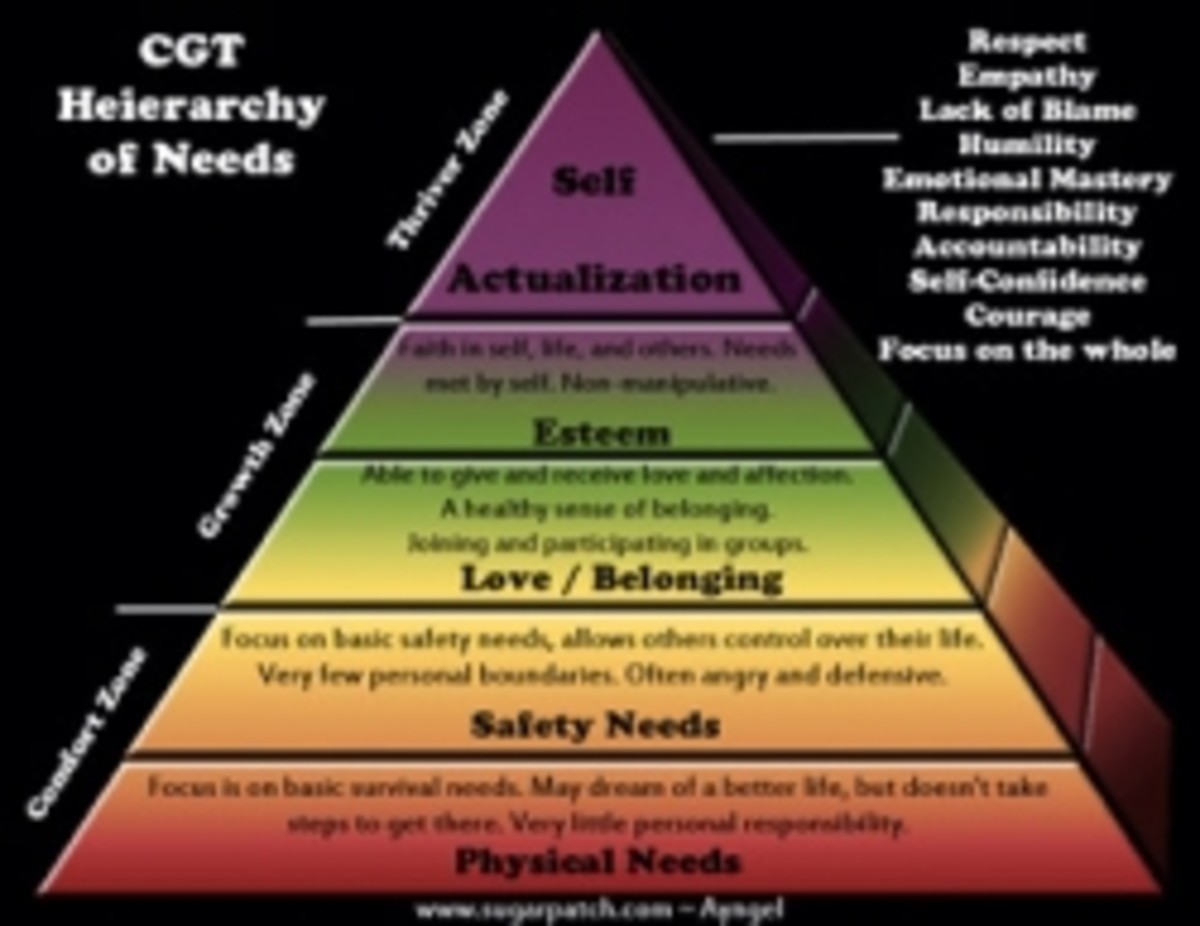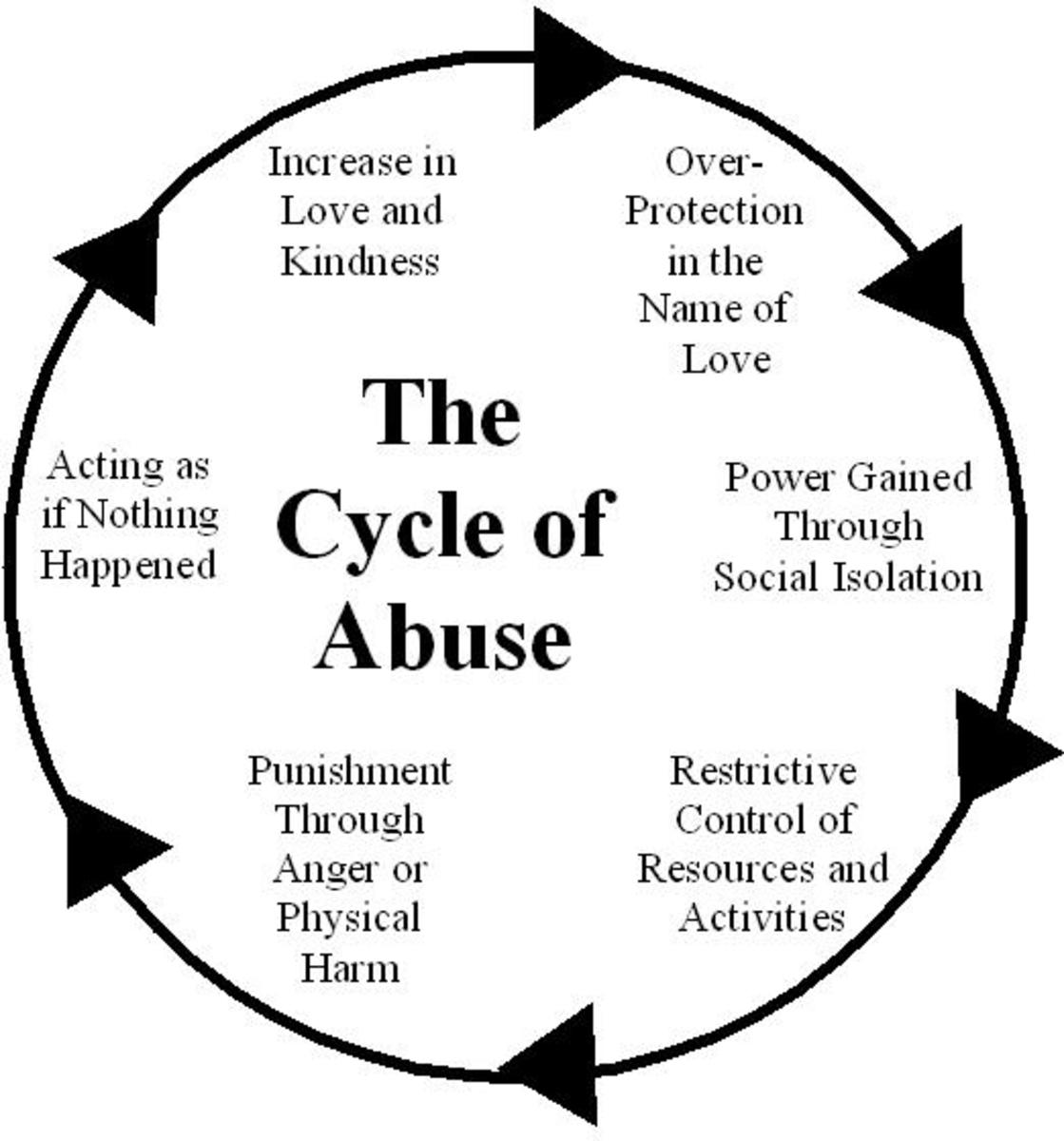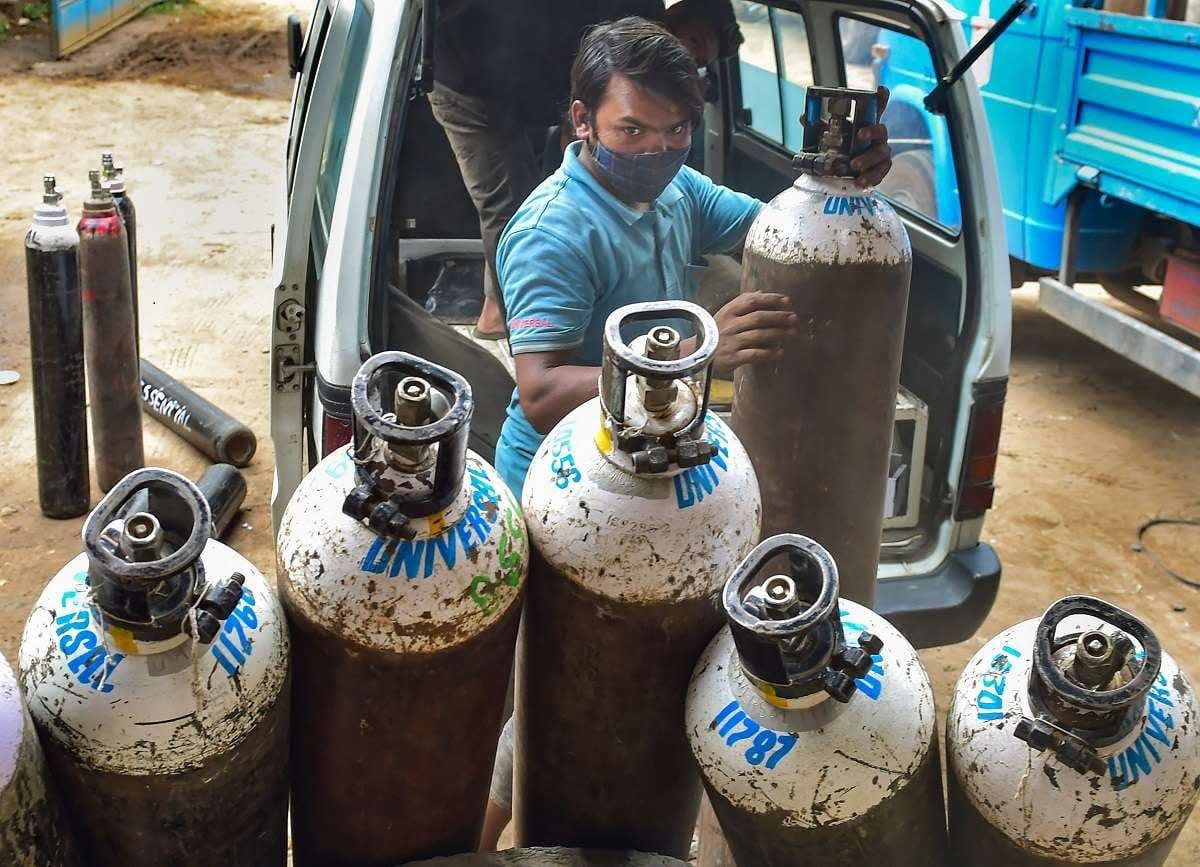Is Abuse of The Elderly More Common in Low-income Homes?
The Abused
He spent his final decades alone, a tenant--"resident" is the preferred term--in a low-income seniors' and disabled persons' rent-subsidized housing project. He was, in fact, all three: low-income, elderly, disabled. A paid "caregiver" jabbed, pushed and yelled at him. The apartment, a small studio, reeked. While inventorying his possessions during one of his hospital stays, she was heard to comment to a compeer, "We can sell this." She had his pin number and had gotten her name onto his bank account. Asked why he didn't request a different caregiver, he responded "I'm afraid." No eccentric recluse, he wanted to be out and about. On weekends, when no building staff were on the premises, he would emerge from his cell and, leaning on his walker, navigate the corridor back and forth as many times as he possibly could. (Peck)
Recommended Reading
Types of Abuse
Victims of elder abuse fall into a group of victims that are hidden from our society at large. Broadly defined there are three basic categories of elder abuse: domestic, institutional, and self-neglect or self-abuse.
The National Center on Elder Abuse defines seven different types of elder abuse:
- physical abuse
- sexual abuse
- emotional abuse
- financial exploitation
- neglect
- abandonment
- self neglect.
Who Abuses
Two-thirds of the perpetrators of abuse are family members. Abusers who live with the elder have more opportunity to abuse. A high percentage of victims live with abusers.Hard as it is to believe, the great majority of abusers are family members, most often an adult child or spouse. Abusers may be isolated from the larger community themselves or may seek to isolate the elders from others so that the abuse is not discovered. Most "senior citizens" are women, the majority are of low-income and both ageism and sexism are frequently involved. Older women are far more likely than men to suffer from abuse.

Elder abuse occurs in both high-income and low-income homes.
Many factors play apart in elder abuse among low socio-economic status. Low socio-economic older adults are associated with higher rates of medical and psychological disorders. They have poorer access to medical care, prescription medications, long-term care, and community-based care and Medicare funds mental health care at a lower rate than medical care. This further limits the amount and/or services available to them. Older adults often live on limited retirement incomes, have limited prospects for future earnings, and frequently face overwhelming health care costs. Nursing homes, home health agencies and assisted livings are not available to them. In turn, making the family responsible. Although people living at poverty levels have high stress factors, does this really make them more apt to abuse?
Individuals who do not have the skills, information, resources, etc. and who are otherwise ill-prepared for the care giving role may experience extreme stress and frustration. This may lead to abuse and/or neglect.
Abuse can also occur at a long term care facility, such as a nursing home or assisted living residence. Employees and temporary staff who have direct contact with residents are the most frequent abusers. Other offenders may include other family and old friends, newly developed “friends” who intentionally prey on older adults, and service providers in positions of trust. There is no "one profile" of an abuser.
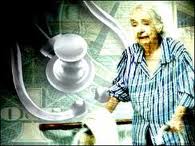
Characteristics of an Abuser
However, they often share some of the following characteristics:
• Alcohol or drug dependence
• History of domestic violence or abuse
• Mental illness, dependency, family dysfunction
• Economic pressures, personal stress
• Longstanding personality traits (bad temper, hypercritical, tendency to blame others for problems)
In long term care settings, some other potential risk factors are:
• Negligent hiring practices (hiring violent criminals, thieves, and drug users to work as aides, maintenance workers, etc.; failing to do required background checks)
• Too few staff, high turnover, and inadequate training
• Reliance on staff who lack compassion or empathy for older people and those with disabilities
Some families and individuals, however, may be more at risk than others. Factors that may increase an elder’s vulnerability include:
• Social isolation/loneliness (lack of social support networks).
• Mental impairment (may increase dependence on abuser).
• Personal problems of abuser (emotionally or financially dependent on the victim; history of mental illness; hostility; alcohol or drug abuse).
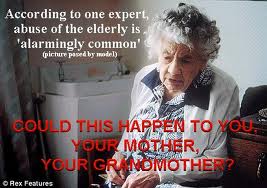
Another Article By Me : signs and symptoms
- Elder Abuse: More Common Then You Think
Elder abuse is doing something or failing to report something that causes harm to a elderly person. Such as: Physical Abuse- This involves restraints, pushing, shoving, slapping, force feeding, anything...
When one form of abuse is present, it is likely that other forms are present as well. When elders don’t adequately care for themselves, their likelihood of falling victim to others increases.
According to the National Center on Elder Abuse, although the risk is high for abuse in low income families, the highest reported abuse is in trained facilities; such as Assisted Livings or Nursing Homes.
I have worked in health-care for the last 20 plus years. I have seen my share of abuse. At one time it was legal to tie someone to their wheelchair or bed just because they were “misbehaving.” I had force fed clients with a syringe, certainly causing aspiration. Clients would sit in their own feces and urine for hours at a time and this was okay. I admit to feeling guilty for my actions, but as a young 16 year old certified nursing assistant, who really didn’t know how to stand up for their rights, I did them wrong. We did not have the rules and regulations we have now to protect our clients and their safety and rights as humans. You- as a person- as a HUMAN- have a moral obligation to report abuse!
I now work with Hospice clients. I have worked with families and clients who had, realistically, nothing. The one thing I can say from experience is that rich or poor, abuse is intentional and cannot be based off someones income.
Abuse comes from somewhere inside the individual causing it. Money, or lack thereof, may cause higher stress but it comes down to the characteristics of the potential abuser.




